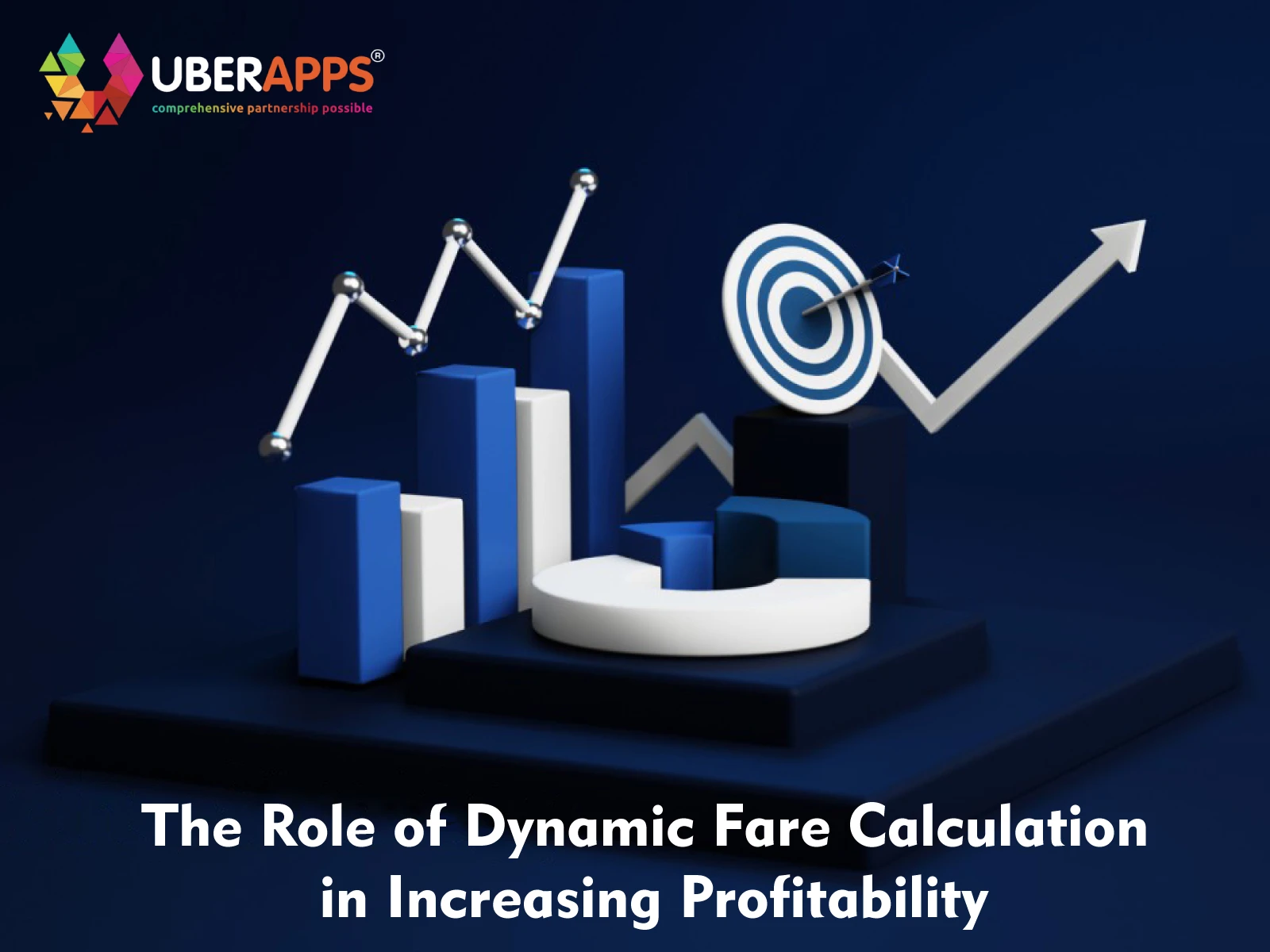
The Role of Dynamic Fare Calculation in Increasing Profitability
Dynamic Fare Calculation has revolutionized how modern taxi booking apps set ride prices. Instead of depending on fixed tariffs, this AI-powered pricing model adjusts fares in real time based on varying factors such as demand, location, and driver availability. For startups adopting a white-label taxi app or uber clone solution, dynamic fare algorithms can significantly boost profitability while maintaining competitive pricing.
In today’s fast-paced ride-hailing app market, businesses that adopt smart fare calculation systems stand to gain not only higher margins but also improved customer satisfaction through transparent, data-driven pricing.
Dynamic Fare Calculation is changing the economics of taxi and ride-hailing platforms by offering adaptive, AI-based fare management. Instead of fixed pricing, these algorithms adjust rates according to market demand, driver availability, and real-time traffic conditions. This strategy enhances earning potential for startups using white-label taxi apps while maintaining fairness for riders. Integrating dynamic pricing with in-app payment systems increases automation and supports transparent billing. Paired with a robust admin dashboard, it enables precise fare analytics, improved driver retention, and predictive revenue growth. Whether you operate a ride-hailing app or plan to launch an uber clone, understanding Dynamic Fare Calculation is vital for scaling profitably and sustainably in competitive markets.
Understanding Dynamic Fare Calculation in Taxi Booking Apps
Dynamic Fare Calculation is a real-time pricing mechanism that uses live data such as traffic, trip distance, rider demand, and driver supply to automatically determine fares. By integrating an intelligent algorithm, taxi booking apps can maintain balanced pricing profitable for drivers and fair for riders.
Key Factors Behind Dynamic Fare Adjustment
- Demand and Supply Ratio: When requests surge but available drivers decrease, the fare automatically increases to balance demand.
- Traffic Conditions: Congested routes impact duration and fuel usage, leading to fare recalibration.
- Peak Hours & Holidays: During rush hours or special occasions, base fares rise dynamically.
- Driver Incentives: Encourages drivers to operate in high-demand areas, optimizing service coverage.
- Geographical Zones: Apps can define specific city or regional fare rates using geo-fencing.
Dynamic fare engines collect real-time data via AI algorithms and APIs, enabling an optimized customer experience and business profitability.
Why Dynamic Fare Calculation Is Crucial for Ride-Hailing Businesses
Integrating dynamic pricing in a ride-hailing app helps companies achieve a sustainable revenue model. It aligns business goals with real-world operational data.
Boosting Profit Margins
Dynamic fares help maximize revenue during high demand periods, ensuring that both the business and drivers benefit financially. When coupled with automated in-app payments, it ensures seamless profit management.
Improving Driver Retention
Drivers prefer working with platforms offering surge-based incentives. A well-configured dynamic fare system encourages drivers to remain active during critical times, resulting in stronger driver loyalty.
Enhancing Rider Experience
Riders receive transparent pricing that fluctuates logically based on supply and demand improving trust and fairness perception. With features like fare estimation and auto fare comparison, passengers can make informed choices.
Business Scalability
The dynamic fare algorithm makes expansion easier across cities or countries since fare rules can be automatically modified per location, distance unit, or taxation structure.
The Technology Behind Dynamic Fare Systems
Dynamic Fare Calculation combines machine learning and data analytics to analyze large volumes of user and trip data. This ensures predictive accuracy across variable market conditions.
AI and Machine Learning in Pricing Models
AI learns fare patterns from trip data and external datasets, predicting the optimal balance between competitive pricing and profit. Taxi app developers rely on ML models that improve over time, learning from behavioral data.
Integration with Mapping and Sensor APIs
By leveraging tools like GPS, accelerometer, and Google APIs, the app calculates accurate distances, real-time trip durations, and optimized fare estimations. This integration ensures better ETA calculations and minimized errors.
Cloud-Based Fare Engines
Cloud infrastructure allows instant scalability and real-time updates. When applied in white-label taxi solutions, fare data is synchronized across rider, driver, and admin interfaces.
Benefits of Dynamic Fare Calculation for White-Label Taxi Apps
Adopting white-label taxi software with an integrated dynamic fare engine can instantly increase operational transparency and profitability.
Real-Time Profit Optimization
The system adjusts fare values based on minute-by-minute conditions, driving higher earnings when riders are most willing to pay.
Driver and Fleet Efficiency
Ensures balanced ride distribution and motivates drivers to work during peak hours, avoiding idle time.
Transparent Revenue Streams
Every fare calculation and change is logged in the admin dashboard, providing clear analytics for decision-making.
Improved Market Competitiveness
Competing ride-hailing solutions without dynamic fare features often lose customers during high-demand periods due to limited driver availability. Ride-hailing startups that adopt algorithmic fare strategies remain agile and price-efficient.
The Role of In-App Payments in Dynamic Fare Execution
Modern taxi booking apps rely on in-app payments for seamless billing and fare management. Integrating multiple payment gateways—credit cards, wallets, or UPI—complements the real-time fare mechanism.
Automating Fare Settlements
After each trip, fare components like base fare, dynamic surge, taxes, and tolls are automatically applied, ensuring fair distribution between company and drivers.
Seamless Refund and Adjustment Handling
If a ride is canceled or route changes occur, AI-driven systems adjust the total fare dynamically and update payment statuses instantly.
Building Customer Trust
Riders receive digital receipts reflecting every fare variable, eliminating disputes and promoting long-term engagement.
Best Practices for Implementing Dynamic Fare Calculation
1 Define Fare Logic Clearly
Set transparent parameters — base fare, per-kilometer charge, time charge, and surge multipliers — so users understand how their ride cost is determined.
2 Integrate Smart APIs
Use API-driven backends to monitor surge patterns and route conditions continuously.
3Secure Data Handling
Protect user and trip data through encryption and compliance with financial regulations.
4 Test in Live Environments
Like UBERApps, allowing live demo environments ensures fare algorithms function efficiently before deployment.
5 Tune Algorithms via Analytics
Continuously track KPIs such as Acceptance Rate (AR) and Completion Rate (CR) to adjust fare multipliers.
Real-World Application: How Ride-Hailing Giants Use Fare Dynamics
Companies like Uber, Bolt, and Didi leverage Dynamic Fare Calculation to sustain balanced ecosystems. These businesses calibrate fare multipliers by minute-to-minute demand, location density, and weather factors.
For startups adopting uber clone apps, dynamic pricing becomes a key differentiator, allowing data-driven control without cutting into profitability. Paired with instant driver payouts and simplified admin dashboards, it ensures efficiency across geo-locations.
Why Dynamic Fare Calculation Matters for Startups
Revenue Predictability
Startups can forecast earnings more accurately using live trip statistics and automated reports.
Improved Cost Management
By integrating analytics, the system reduces API costs, like Google Maps usage, and enables tax rule adaptability per region.
Long-Term Sustainability
Dynamic pricing guarantees a consistent driver supply and fair client billing, ensuring business continuity in variable market conditions.
Challenges and How to Overcome Them
Technical Complexity
Implementing an AI-backed fare system requires data integration, testing, and algorithm training. Partnering with experienced developers like UBERApps Technologies minimizes scalability risks.
User Transparency
Overcoming users’ perception of “surge pricing” as unfair involves educating them through notifications and upfront fare displays.
Maintaining System Reliability
Real-time fare updates demand strong servers and APIs. Cloud-based backend deployment ensures consistent performance even in high-traffic zones.
Conclusion
Dynamic Fare Calculation isn’t just a pricing tool; it’s a profit engine that powers modern taxi booking apps. By analyzing real-time market behavior, supply-demand balance, and travel routes, it ensures optimized pricing for both drivers and riders. Integrating AI and in-app payment systems further refines this experience, automating the settlement process while maintaining transparency.
For emerging startups adopting white-label taxi apps or developing custom uber clone solutions, dynamic fare engines offer a foundation for long-term scalability, financial control, and driver loyalty. Beyond boosting corporate profitability, they enhance fairness, driver participation, and customer satisfaction creating a balanced ecosystem.
In today’s unpredictable ride-hailing market, embracing dynamic pricing is not optional; it’s essential. It’s the bridge between sustainability and growth defining the future of intelligent taxi app development.
FAQS
1. What is Dynamic Fare Calculation in taxi apps?
It’s an AI-based system that adjusts ride prices in real time depending on factors like demand, driver availability, and traffic conditions.
2. How does dynamic pricing help taxi startups?
It increases profit by aligning fare rates with market demand, ensuring peak-hour profitability and better driver participation.
3. Can riders trust fare transparency in dynamic pricing?
Yes, because modern apps display accurate fare estimates upfront before the ride begins.
4. What are the tech requirements to integrate dynamic fare modules?
Developers need API integrations, real-time analytics, and ML-based algorithms for continuous optimization.
5. Does Dynamic Fare Calculation affect customer loyalty?
When executed transparently, it actually improves trust and fairness perception, fostering long-term brand loyalty.
Author's Bio

Vinay Jain is the Founder of UBERApps and brings over 10 years of entrepreneurial experience. His focus revolves around software & business development and customer satisfaction.

